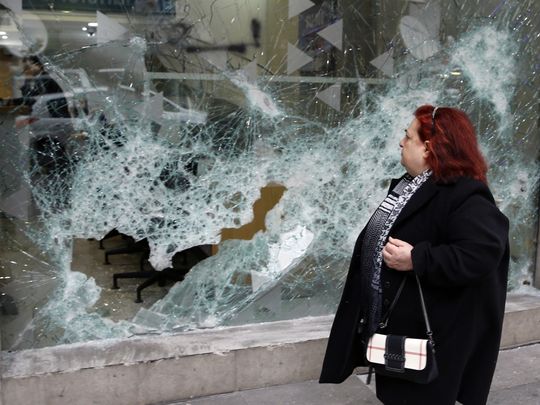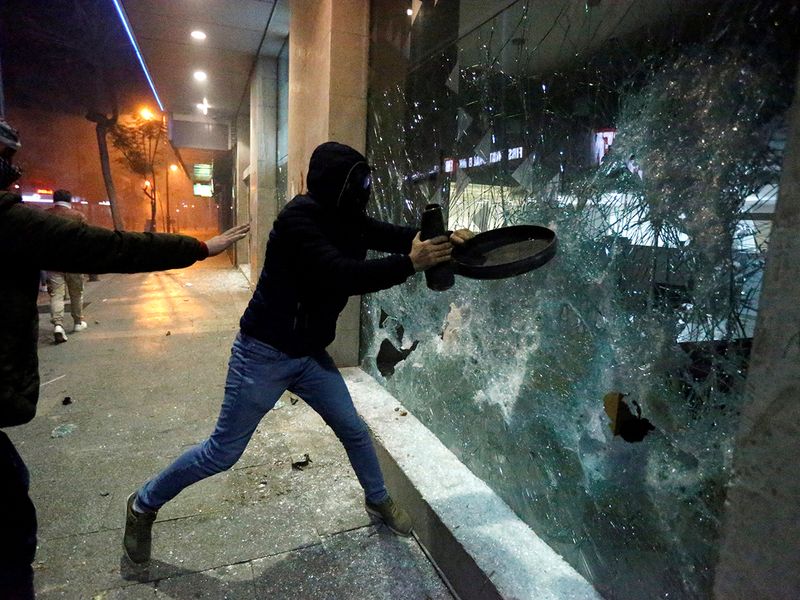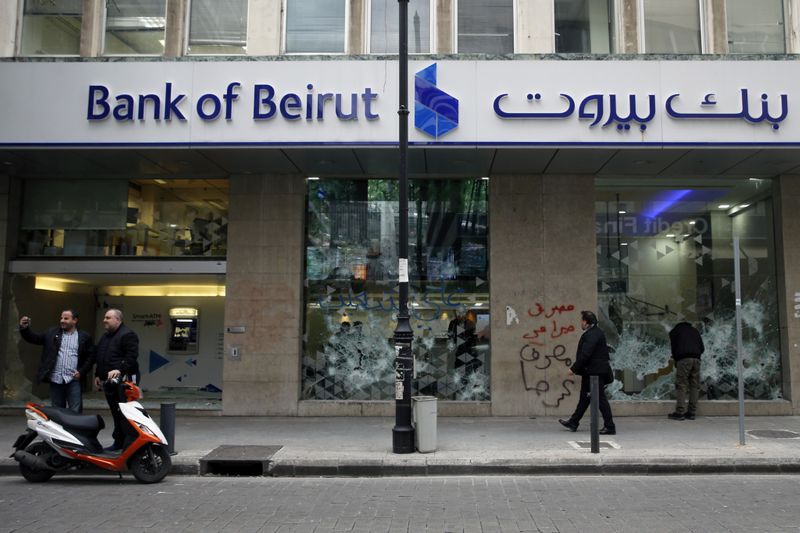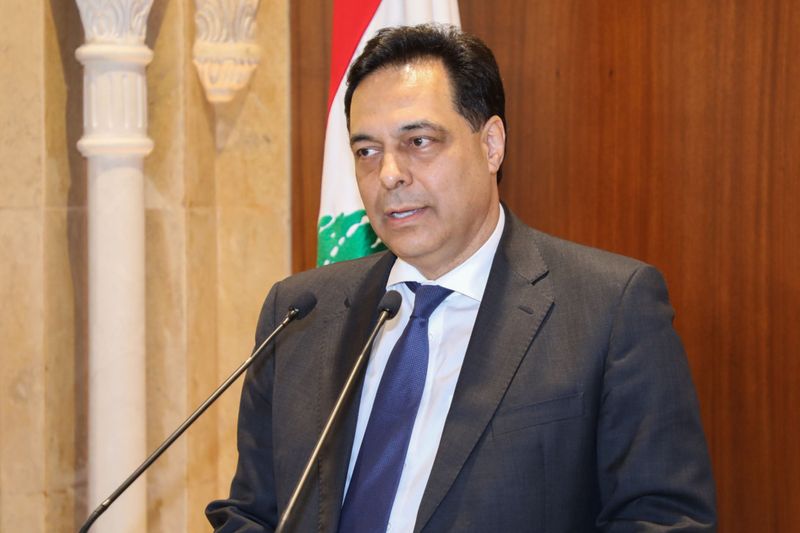
Beirut: Protesters in crisis-hit Lebanon clashed with security forces in Beirut Wednesday, a day after demonstrators outraged by restrictions on dollar withdrawals attacked bank branches with metal rods, fire extinguishers and rocks.
Hundreds gathered again outside the central bank on Wednesday evening, moving to a police station where more than 50 people were still detained following clashes between demonstrators and security forces the previous night.
They chanted slogans and demanded the release of their comrades before security forces fired teargas to disperse them.
Why are Lebanese angry at the banks?
Four months into a protest movement against Lebanon’s political class, demonstrators have turned their anger at the banks, most of which have imposed informal capital controls to stave off a liquidity crunch.
That has trapped the savings of ordinary depositors in Lebanon’s worst economic crisis since the 1975-1990 civil war.
Protester Yumna Mroue, 22, said the central bank’s financial policies had been harming small savers for years.
“We’re in free-fall now. What happened last night comes from people’s real pain and anger,” she said.
The Red Cross said at least 37 people were injured Tuesday night as protesters smashed bank windows and scuffled with security forces in the capital’s commercial district of Hamra.
59 arrested in largest arrest wave
Police said 59 people were detained in one of the largest waves of arrests since Lebanon’s anti-government protests demanding sweeping reform began on October 17.

On Wednesday morning in Hamra, most branches were left with smashed windows, destroyed ATMs and graffiti-daubed walls, after what the Association of Banks condemned as a “savage” onslaught.
Banks opened despite the wreckage, as cleaners scrubbed paint off walls and workers replaced smashed windows.
“There is a lot of anger,” Alia, a passerby, told AFP in front a damaged branch. “You have to go to the bank twice to withdraw just $200.”
On Wednesday evening, hundreds of demonstrators gathered in front of the central bank, whose governor Riad Salameh they partly blame for the country’s financial crisis.
Security forces meanwhile imposed tight movement restrictions in Hamra, closing the main road to the central bank.
The state-run National News Agency reported that some teargas canisters had fallen inside the Russian embassy, near the police station housing the detainees.
Activists said several people including at least one video journalist had been injured in the clashes.
What exactly are the controls imposed by the banks?
Since September, banks have limited the number of dollars customers can withdraw or transfer abroad, in a country where the greenback and the Lebanese are used interchangeably.
Although no formal policy is in place, most lenders have limited withdrawals to about $1,000 a month, while others have imposed tighter curbs.
Prompted by a grinding liquidity crisis, the controls are increasingly forcing depositors to deal in the pound.

But the local currency has plunged by over a third against the dollar on the parallel market, hitting almost 2,500 against the US dollar over the past week.
The official rate was pegged at 1,507 Lebanese pounds to the greenback in 1997.
Demonstrators accuse banks of holding their deposits hostage while allowing politicians, senior civil servants and bank owners to transfer funds abroad.
The central bank has announced it is investigating capital flight, saying it wants to standardise and regulate the ad hoc banking restrictions.
Government formation has stalled
Compounding the situation, debt-burdened Lebanon has been without a government since Saad Hariri resigned as prime minister on October 29 under pressure from the anti-government protests.
Its under-fire politicians have yet to agree on a new cabinet despite the designation last month of Hassan Diab, a professor and former education minister, to replace Hariri.

Diab has pledged to form a government of independent experts - a key demand of protesters - but said last week that some parties were hindering his attempts.
Authorities on Wednesday condemned the night-time attacks and called for perpetrators to be prosecuted.
Hariri called the rampage “unacceptable,” while parliament speaker Nabih Berri questioned whether the aim was to “destroy the country.”
But in a strongly worded statement, United Nations envoy to Lebanon, Jan Kubis, blamed politicians for the turmoil, accusing them of inaction while watching the economy “collapse”.
“Politicians, don’t blame the people, blame yourselves for this dangerous chaos,” he said.








